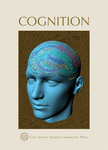|
LXXIX: Cognition 2014 |
|
|

|
Li Chin Wong, Eunjeong Lee, Hye Young Lee, Jineun Kim SYMPOSIUM SYNOPSIS LIST OF PARTICIPANTS CONTENTS OF SYMPOSIUM VOLUME PHOTOGRAPHS PUBLISHED VOLUME PRESENTER INTERVIEWS  |
Cognition
May 28 - June 2, 2014
Symposium Synopsis
Organizers: Cori Bargmann, Daphne Bavelier, Terrence Sejnowski, David Stewart & Bruce Stillman
The Laboratory selected the theme of Cognition for the 79th Symposium in this historic series largely because of the tremendous advances being made by neuroscientists and psychologists working on cognitive processes at scales varying from the molecular to whole-brain and theoretical studies. Previous Symposia that addressed the brain included the fourth Symposium on Excitation Phenomena (1936), The Neuron (1952), Sensory Receptors (1965), The Synapse (1975), Molecular Neurobiology (1983), The Brain (1990), and
Function & Dysfunction in the Nervous System (1996), so a return to the general theme of neuroscience was long overdue. Furthermore, a number of national projects on brain function have been initiated over the last few years, including President Barack Obama’s announcement of the BRAIN (Brain Research through Advancing Innovative Neurotechnologies) Initiative in April 2013, a collaborative research project akin to the Human Genome Project, with the ultimate goal of mapping the activity of every neuron in the brain by 2025. These projects and initiatives reflect the fact that many neuroscientists are increasingly optimistic that major obstacles in understanding brain function may be overcome through the use of new technologies and approaches, and that these advances may shed light on novel approaches to treat psychiatric, neurological, and neurodegenerative diseases.
The 2014 Symposium was designed to span a broad range of approaches toward increased understanding of cognitive processes in the brain including cell/molecular biology; developmental neurobiology; genetics and genomics; electrophysiological approaches; functional neuroimaging at cellular and whole-brain resolutions; computational neuroscience; behavioral, ethological, and psychophysical studies; and evolutionary/comparative neuroscience. The program of invited speakers was arranged to ensure that fundamental discoveries were balanced with approaches relevant to societal well-being, including a variety of stratagems for harnessing our increased understanding of brain function to improve treatment of mental illness and brain disorders. Speakers responded to the challenge of putting their own research, whether based on single-neuron studies, circuits, or whole-brain studies, into a broader context, allowing for a tremendous amount of cross talk across disciplines with much insight gained from this unusually broad meeting. This is one of the strengths of the Symposium, and the 2014 meeting was particularly successful in highlighting emerging connections between molecular/cellular networks and higher brain functions such as language and decision-making.
Opening night speakers included Richard Axel (Columbia University) on innate and learned responses to odors, Allison Doupe (University of California, San Francisco) on vocal motor plasticity, Matthew Rushworth (University of Oxford) on decision-making, and Patricia Kuhl (University ofWashington) on language acquisition. One of the three Churchland neuroscientists who spoke at the Symposium, Patricia Churchland (University California, San Diego) addressed “The Brains Behind Morality” in an excellent Dorcas Cummings lecture for Laboratory friends, neighbors, and Symposium participants in advance of the annual dinner parties. Terry Sejnowski delivered a compelling and comprehensive summary that captured much of the research and discussions presented at the meeting.
This Symposium was attended by almost 300 scientists from both U.S. and international universities, and the program included 60 invited presentations, six short talks selected from the openly submitted abstracts on the basis of scientific merit, and 130 poster presentations. To disseminate the latest results and discussion of the Symposium to a wider audience, attendees were able to share many of the Symposium talks with their colleagues who were unable to attend using the Leading Strand video archive. A collection of interviews by
Karen Carniol (Cell), Ann Goldstein (Neuron), Charvy Narain (Nature Neuroscience), Gary Stix (Scientific American), and Jan Witkowski (CSHL Banbury Center) with leading experts in the field were arranged during the Symposium, distributed from the Cold Spring Harbor Symposium interviews website, and available in edited form in this volume.
We thank Val Pakaluk, Mary Smith, Ed Campodonico, and his staff in the Meetings & Courses Program for their assistance in organizing and running the Symposium, and John Inglis and his staff at Cold Spring Harbor Laboratory Press, particularly Inez Sialiano and Jan Argentine.
Cori Bargmann
Daphne Bavelier
Terrence Sejnowski
David Stewart
Bruce Stillman
Search images: